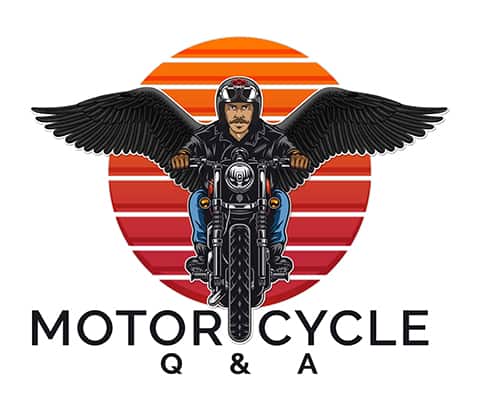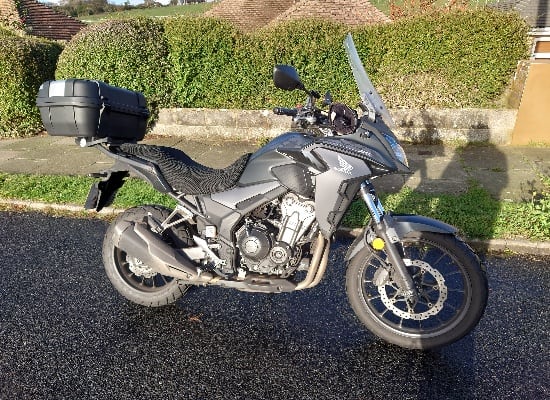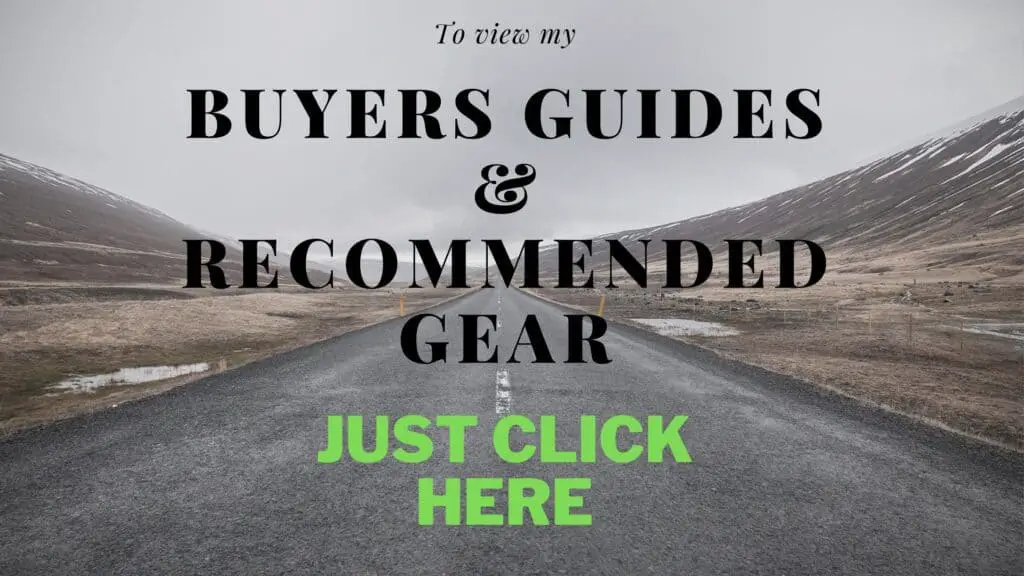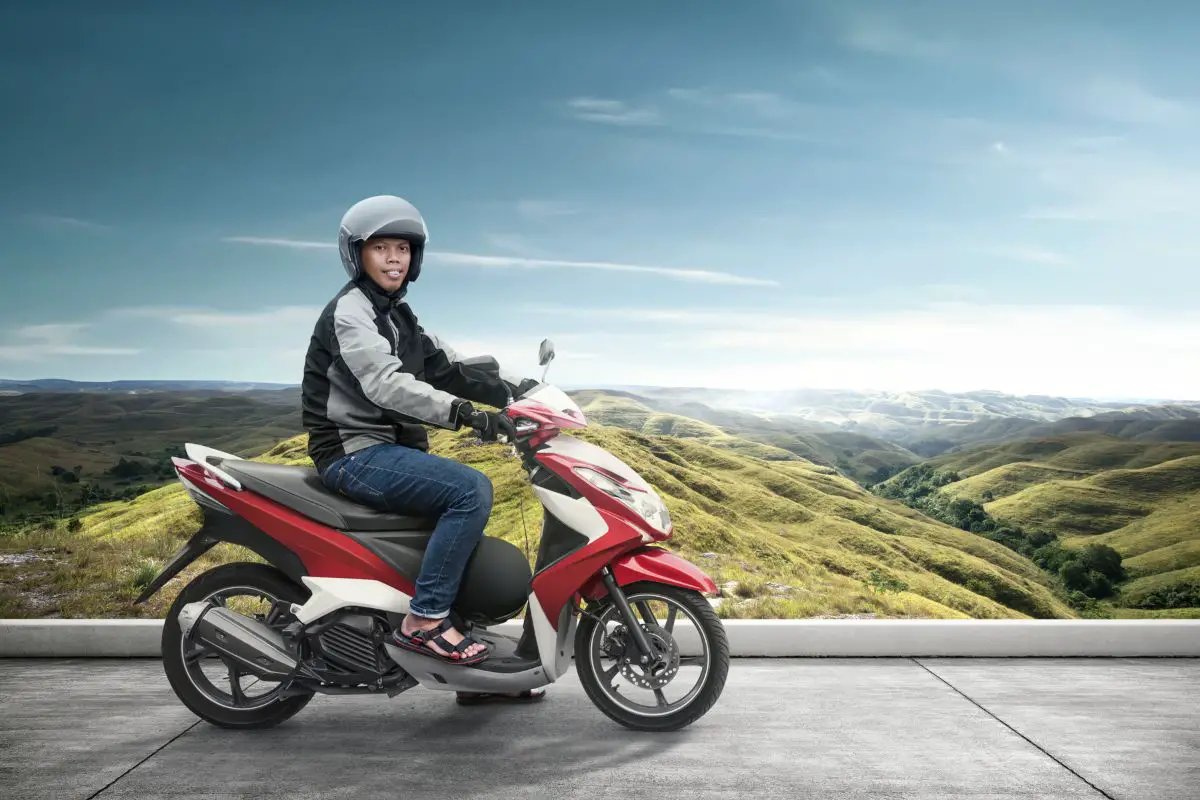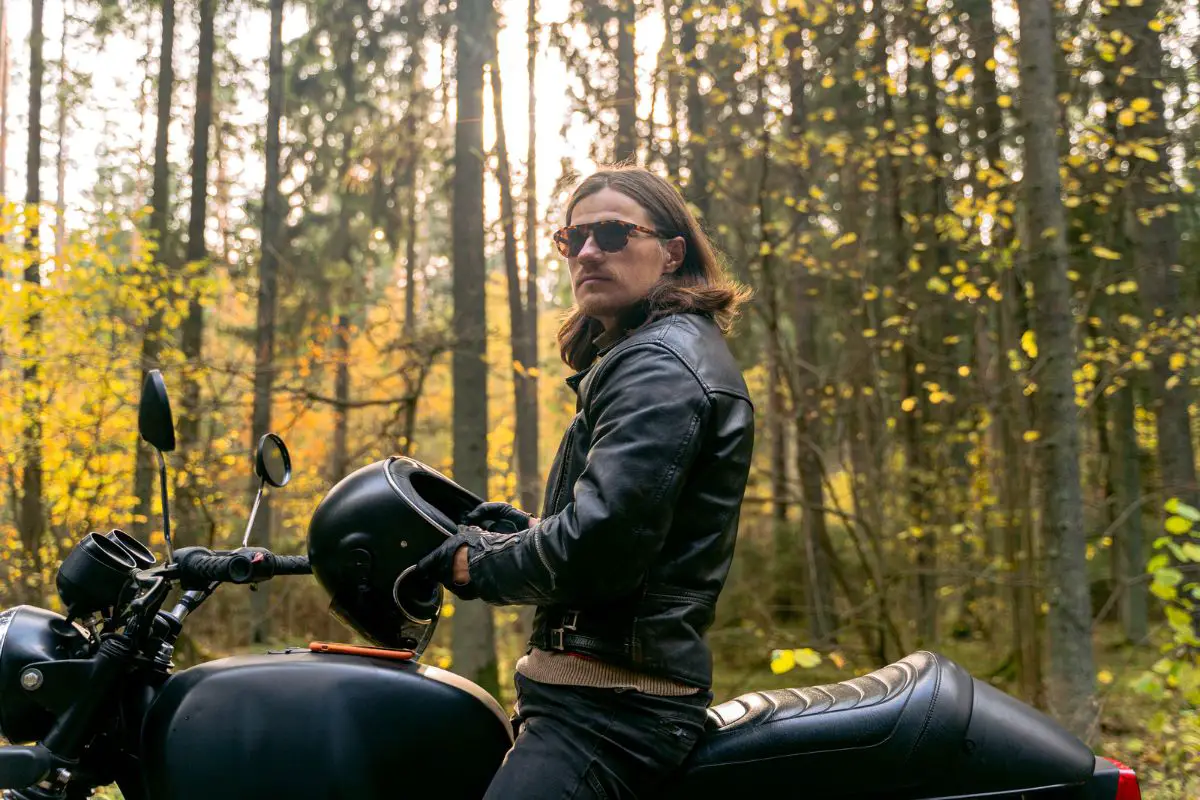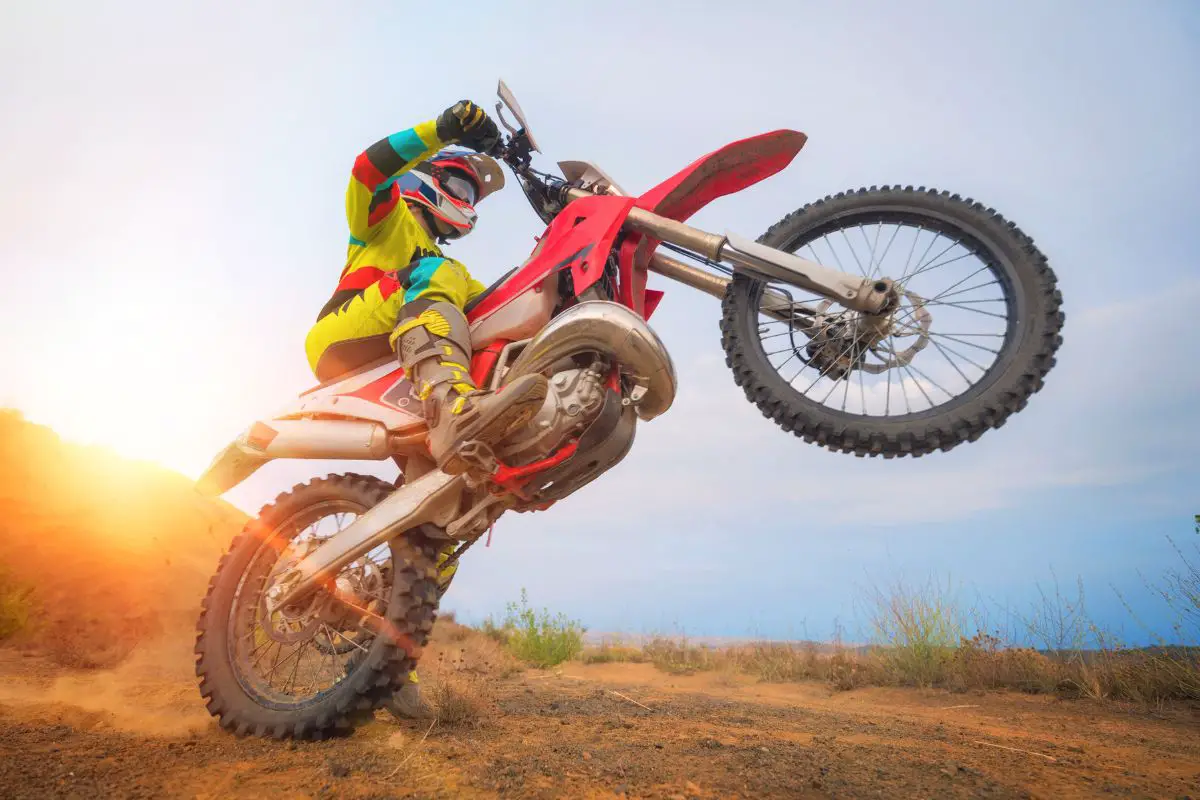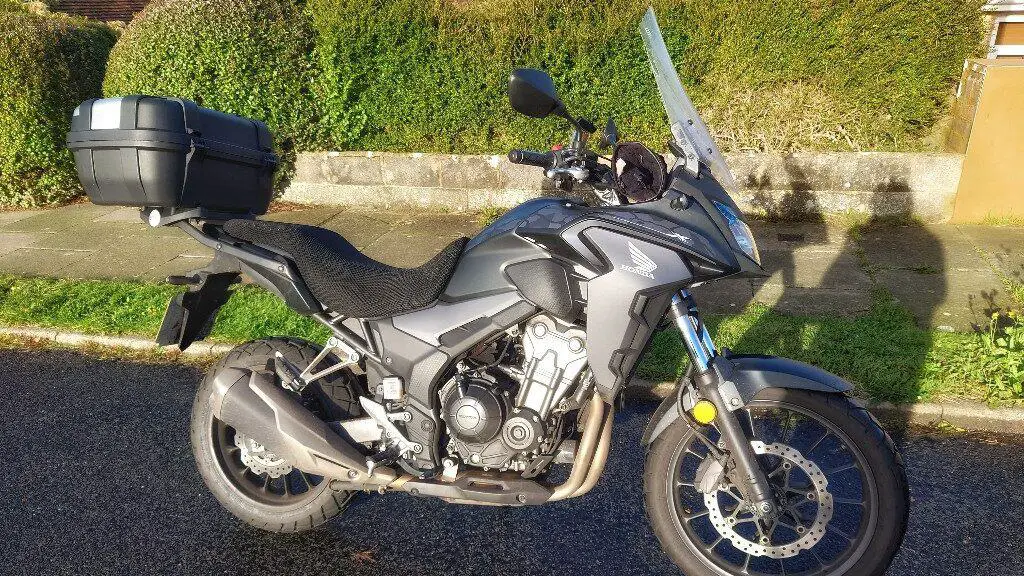
When you view a list of the top best full-size motorcycles for a beginner – chances are you have not had a huge amount of experience with purchasing motorcycles.
When a brand-new learner motorcyclist is looking to purchase a new full-size motorcycle, they must know exactly what to get and why that matters.
Within this article, I will outline important factors that you need to look for in your new beginner motorcycle: what you want to use it for, how much it will cost, how comfortable it will be, how powerful the engine might be, and more.
So, what are the top eight best full- size beginner motorcycles?
- KAWASAKI VERSYS X 300 ABS
- YAMAHA MT-03
- BMW G 310 GS
- KAWASAKI Z400
- KTM 390 DUKE
- DUCATI MONSTER 797
- HONDA CB 500X
- KAWASAKI NINJA 400 ABS
Now you know what the top 8 best beginner motorcycles are, I will run you through in more detail my eight top picks for beginner motorcycles that you can pick up right now.
Any of these eight motorcycles would perfectly satisfy all the criteria we have outlined as important for beginner motorcycles. You would be in good hands if you picked one of them.
I want to thank the sponsors of this post-EMANUALONLINE. Using their service, you can download your motorcycle or car manual to your mobile phone or any other device, so you will have it handy should you ever be out and about and need to use it. You can visit their website by clicking the icon below and using the code BUDDY15 to get a 15% discount.
There are definitely some considerations to bear in mind when you purchase a full-size beginner motorcycle, which I will break down into more detail:
- How will be using your motorcycle?
- How much money do you want to spend? (your budget)
- Comfort considerations
- The motorcycle’s engine power
- The braking system
- And other factors
If you want to find out about each one of these motorcycles in more detail, then carry on reading as I take you through the list of the top 8 best beginner motorcycles – and what makes these pieces of kit superlative for the job at hand.
I have also included a video review of each motorcycle, so you get a chance to really understand what each one is about.
So lets get into it!
1) How will you be using your motorcycle?
This aspect of your purchase decision making should help you decide how you look at the other three.
For example:
Are you riding your bike in a city, or in a more rural, countryside area?
Are you going to be using your motorcycle for regular commuting to work every day?
Is your motorcycle just going to be used for social activities at the weekend?
If you are using your bike in a city, you will want a more compactly built, smaller motorcycle that can zip comfortably among city streets and traffic. Another important point for urban motorcyclists is fuel efficiency. You want to get the most fuel economy out of your motorcycle that you can possibly find.
I have had quite a number of different bikes over my two decades of riding and can tell you that if you want to use your bike for commuting around the town or city, you definitely want to get one that has a slimmer design.
Many years ago, I had a Honda Varadero 1000cc. It had a large tank size and was a big wide bike. I was forever getting stuck in traffic because I wasn’t able to filter through it. However, my Kawasaki ER6 F 650cc was great for nipping through the traffic because it was thin and lightweight, but I would not take this bike on a long motorcycle tour.
So, you see, you have to compromise when looking to purchase a motorcycle and decide what you will use it for most of the time.
If you are a more rural motorcycle user, then there are a few different considerations you need to think about. You might well be driving much longer distances than a city rider. In which case, you may need better fuel efficiency, coupled with much stronger horsepower and a larger frame.
Or for example, comfort may be your main consideration, and fuel economy may not concern you that much.
This larger frame guarantees more comfort on winding, rougher country roads for the larger amount of time you are likely to spend on them. These larger frames are typically coupled with thicker, bigger tires that increase comfort on the roads. You will get less fuel efficiency but a better, more relaxed ride.
As you can see, when you are looking to purchase a beginner motorcycle, there is more to it than meets the eye. So, please do not rush this process, or you may end up regretting it.
2) How much money do you want to spend?
After considering the usage of your prospective full-size motorcycle, budget is your next pressing concern. Typically, brand new bikes, even for beginners, are priced at upwards of a few thousand dollars.
For a beginner motorcycle, you are likely looking at spending three to four thousand dollars for a cheap machine, or are you going to get one in the higher bracket, say six to ten thousand dollars?
It is also worth considering in your budget the upkeep cost of the different types of motorcycles. Cheaper motorcycles might require much more upkeep, such as more frequent servicing intervals, so ensure that this is considered within your budget.
If you are looking for something more sustainable, your price range can fluctuate between $5000 and $10,000. Of course, this is much more expensive, so make sure you are ready for that kind of financial commitment.
When it comes down to purchasing your beginner motorcycle, you will get what you pay for. The cheaper bikes are not made with the same standard of materials as the more expensive ones, so paying more money for a bike could work out cheaper in the end because the servicing intervals can be much longer.
Also, because the build of the motorcycle is better quality, the parts on them will last much longer, so you could have fewer repair bills over time.
Another thing to consider is that a more expensive initial investment will require less upkeep if you live and ride in an area where you might not be able to access repairs and motorcycle shops. In this case, a higher upfront cost might net you a more powerful engine, alongside not needing the same repeated repairs a cheaper bike might require.
To give you some reference with regards to upkeep, here are some associated upkeep costs you may need to consider:
- Motorcycle insurance is normally a bit more expensive than insuring a car, so make sure you check this out first before purchasing any motorcycle.
- Motorcycle tires range from $200 to $600 for a single set. Again, it is worth considering that a cheaper set of tires will need to be replaced more often.
- A general estimate of general maintenance costs, including oil changes and chain/drive belt replacement, would put you at an average cost of a thousand dollars a year.
The bottom line here is to spend as much as you can afford to get the highest quality motorcycle you can get if you are thinking of keeping it for a few years. If you only want to keep it for a year or so, maybe you can opt for a cheaper brand.
3) Comfort Considerations
Wherever you are, no matter how long your journeys may be or how bumpy the roads are, we all need comfort. We all need some comfy seats, ergonomic handlebars, and some nice upholstery.
This matters more in some places than others – and has a noticeable impact on your beginner motorbike budget.
If you are a city-dwelling beginner motorcyclist, this might not be the most important thing to consider. City commutes on motorcycles are typically shorter in length and time and generally do not have as bumpy a path to follow.
While city roads have traffic problems, the construction of the roads themselves is much more uniform than those fabled country roads (no John Denver reference intended here).
Rural motorcyclists might want to focus more on comfort and a larger size than city riders, who will be more concerned with size and portability than comfort.
Are you a larger person? If so, a larger framed motorcycle may suit you better than a small one, and visa versa if you are a smaller built person.
4) The Motorcycle’s Engine Power
The last element to consider is engine power. This is important wherever you are but needs to be prioritized in country areas.
Longer drives generally require a more powerful engine – likewise, an engine with more power will be a touch wasted in crowded, more traffic-heavy urban areas.
A good general engine size for a beginner motorcycle is 500 or 600cc, but you have to be careful when looking at engine sizes. For example, a 600cc adventure bike may have half the power of a 600cc sports bike. The engine size is the same, but the way the engine has been tuned makes them a completely different type of engine.
5) The Braking System
When looking to purchase your full-size beginner motorcycle, you must consider the breaking set up on any bike you may be interested in purchasing.
I would highly recommend that you purchase a bike with an ABS braking system in my own experience. You never know when you will have to act and make an emergency stop. Also, being a beginner motorcyclist, you may panic and apply the brakes too hard, so ABS is good insurance that you won’t skid.
The ABS on a motorcycle will stop the brakes and tires from locking up if you apply the brakes too forcefully. This will prevent your motorcycle from skidding and save your life if you panic for some reason and hit the brakes hard.
Manufacturers of motorcycles may make the same bike, but you may have to pay extra for the bike’s ABS version. This extra cost should be seen as a good investment.
6) Other Factors
There are a few other things you should look at when purchasing your beginner motorcycle, which is how high the seat on the motorcycle is, the windscreen, and the height of the handlebars.
Seat Height
When I purchased my first beginner motorcycle many years ago, I didn’t pay too much attention to this fact. The motorcycle dealer did not advise me on this issue, so I ended up purchasing a too high bike for me.
I was forever on tiptoes when at the traffic lights, and after a while, it became extremely uncomfortable. I ended up getting another motorcycle from a different dealer only a few months later.
This was not only a disappointment to me as I liked the motorcycle, but it ended up costing me more money.
Ensure that you can put both your feet firmly on the floor if you are sitting on the motorcycle when it is stationary. This will make for a much more comfortable ride and a safer one too. Being able to control your motorcycle at slow speeds whilst in traffic, for example, is a must.
Alternatively, if your legs are too long, you will feel uncomfortable as well, so you should opt for a motorcycle with a taller seat.
Height Of The Handlebars
The way the handlebars are positioned on a motorcycle will also affect how comfortable the motorcycle will be. Whilst out riding your motorcycle, you will want to be seated in the correct position so that you will be able to take your bike out on longer rides.
If your posture is not correct, it will make riding your motorcycle a much more strenuous task, and you will feel more uncomfortable quicker with fatigue setting in.
When you sit on a motorcycle to try it out, make sure you don’t have to bend forwards to reach the handlebars or the controls. You will want to make sure you feel comfortable with your elbows kept bent slightly when you use the bike controls.
If you do not feel comfortable whilst holding the handlebars and using the controls and it feels like a bit of an effort, fatigue can set in, which can affect your concentration whilst out riding, which is very dangerous. It would be best if you always stay alert when riding a motorcycle. Your life depends on it!
Windscreen Height
The windscreen on a motorcycle will protect you against the wind, rain, or any other weather conditions you may happen upon whilst out on your motorcycle.
Different types of motorcycles come with different windscreens—some may be shorter and some higher.
Sports bikes, for example, may come with a noticeably short windscreen or none.
Adventure-style motorcycles usually come with taller windscreens to protect the rider against the elements on longer rides.
If you are considering riding your beginner’s motorcycle over long distances each day, for example, if you use it to commute to work, then you should take into consideration the height of the windscreen and also investigate if there are taller windscreens available from third-party manufacturers that would fit the bike.
I always seem to change the windscreens on any motorcycle I own as the benefits of having the correct height windscreen are considerable. The windscreen height can really change how your bike feels to you whilst out and about on it.
The windscreen will protect you from the force of the wind while traveling at highway speeds adding to the bike’s comfort and keeping you from feeling fatigued.
The windscreen on your motorcycle also protects you from the rain, insects, or any stones or other items that may shoot up from the road whilst you are traveling.
So, as you can see, the windscreen on a motorcycle is quite an important factor, so you should give this some consideration when purchasing your beginner motorcycle.
The top 8 best full-size beginner motorcycles
Kawasaki Versys X 300 ABS
Sitting at a 296cc, 8V parallel-twin engine, with a huge 17-liter capacity – the Versys X is an attractive prospect for the entry-level motorcyclist. It’s a 6-speed chain-driven motorcycle with a max torque of 19.2 lb-ft @ 10,000rpm.
- Displacement: 296cc
- Max Torque: 19.2 lb-ft @ 10,000rpm
- Transmission: 6 speed
- Final drive: chain drive
- Tire size: 19″ front / 17″ rear
- Tank Size: 4.5 gallons / 20.4 Litres
- Wet weight: 173.2 kg ( non abs) / 175 kg (abs)
It features some brilliant little features, like some off-roading capabilities thanks to its slightly larger tires (19″ front tire compared to the usual 17″ Kawasaki models).
The average price to this bike is approximately $5,500 so is one of the less expensive bikes in this line-up.
While the initial investment is a bit more upfront than some of its competitors (like the BMW G Series), it has considerably fewer upkeep costs than others in the same market. Its road tax and annual service cost are relatively inexpensive compared to some competitors.
Yamaha MT-03
This model from Yamaha is aimed at 20-30-year old’s (the largest entry-level motorcyclist demographic).
For this demographic, the balance that needs to be struck is an appealing bike size and an appearance alongside a student-friendly price point.
Its engine is 321cc, with only a 4-valve system arranged in parallel. Despite that, the bike can reach top speeds of 100mph and sits easily at 70mph without too many vibrations or disruptions. It hits its stride, however, in cities and urban environments.
- Engine: Liquid-cooled parallel twin.
- Displacement: 321cc.
- Compression ratio: 11.2:1.
- Bore x stroke: 68.0 x 44.1mm.
- Valvetrain: DOHC; 4 vpc.
- Fuel Injected
- Transmission: 6-speed.
- Final drive: Chain.
Its quick acceleration and low weight are great for areas like cities or towns, easily allowing you to cut through the traffic on your way to your destination.
BMW G 310 GS
A reasonably priced entry from BMW fits well among its competitors here. While it works well in smaller commuting settings with a fantastically lightweight (clocking in at 169kg) and clutch, the suspension is far too soft for longer-term sporting rides.
It boasts a 313cc engine, and as it gets to higher speeds and revs, there are some noticeable vibrations – not much of a problem for the new city rider but maybe not the choice for those trying to get into sports biking.
- 4 Stroke Liquid Cooled engine
- Displacement: 313cc
- Max torque: 21 l-b ft (28 NM) @ 7500rpm
- Drive: Chain drive
- Tank size: 2.9 gallons (11 L)
- Fuel-injected
- Tires: 19″ front / 17″ rear
- Transmission: 6 speed
However, this motorcycle gives you the best of both worlds as it is fairly suited to going off-road, so you will be able to take this bike on some adventures as well as commute to your place of work each day.
KAWASAKI Z400
Based on the price Ninja 400 model (also reviewed later in this list), the Z400 model is agile and quick around town with a tested fuel economy of approximately 55 miles per gallon.
- Engine: liquid cooled DOHC Parallel twin
- Displacement: 399cc
- Max Torque: 28 lb-ft @ 8,000 rpm
- Drive: Chain drive
- Tank size: 16.8 L
- Fuel injected
- Tires: 17″ front / 17″ rear
- Transmission: 6 speed
There is some limited comfort for larger riders due to the bike’s small frame and smaller tires. On the other hand, this much lighter 167kg weight and heft, combined with a 399cc engine, let it really get moving quickly in commuting spaces.
Riding this bike through city traffic and taking it out for the odd blast on the weekend makes this bike an ideal choice if you’re looking to get some fun out of your beginner motorcycle as well!
KTM 390 DUKE
The Austrian KTM 390 Duke is one of Kawasaki’s direct competitors, and it is generally considered a much better value for money full-size beginners motorcycle.
Sure, the single-cylinder engine is a bit weedier than the Kawasaki’s, but it’s also cheaper as well and much lighter (weighing in at only 149kg), which makes it much more attractive for entry-level learners.
- Engine: liquid-cooled single cylinder
- Displacement: 373 cc
- Max torque: 27.3 lb-ft @ 7,000 rpm
- Drive: Chain drive
- Tank size: 13.2 litres
- Fuel injected
- Tires: 17″ front / 17″ rear
- Transmission: 6 speed
- Wet weight: 149 kg
Despite the weedier engine, the weight makes it punchy and quick to accelerate in commuter areas. However, it does suffer when trying to reach motorway speeds consistently, so I wouldn’t recommend this bike if you are thinking of commuting daily on it, especially if your commute will take you on the highway.
DUCATI MONSTER 797
With the relevant qualifications, a beginner motorcyclist can also ride the Ducati Monster 797.
It is an entry-level bike but stands on the pricier end of the scale. It also tops the scales in terms of weight – sitting at 193kg (as the name “monster” might imply). Despite this weight, there is still a certain amount of agility and verve to the machine, which is always nice to see.
- Engine: L-Twin cylinder, air-cooled
- Displacement: 803 cc
- Engine power: 73 bhp
- Drive: Chain drive
- Tank size: 16.5 L
- Fuel-injected
- Tires: 17″ front / 17″ rear
- Transmission: 6 speed
- Dry weight: 175 kg
We mentioned earlier the need for larger, more chunky bikes for more rural settings – the monster fills that gap in the market. The Monster 797 can operate in cities, sure, but it is more at home on longer, wider motorways that really let you feel the heat and power of the bike.
This motorcycle would make a suitable option if you are having to commute on the highway each and every day. Also taking it out for a blast with your friends will give you great enjoyment as well!
HONDA CB 500X
Clocking in at an average of $1300 cheaper than the Ducati Monster, the CB 500X is another excellent full-size beginner motorcycle if you have the relevant qualifications. And with a Honda quality build and engine, you can’t go far wrong with this super machine.
An upgrade to a 19-inch front wheel (from the Honda’s previous 17″ wheels) shows that the Honda is not just a motorcycle built just for city parking lots and commutes.
- Engine: Liquid-cooled parallel twin, 4 valves
- Displacement: 471 cc
- Max torque: N/A
- Final Drive: chain
- Tank size: 20.9 L
- Fuel-injected
- Tires: 19″ front / 17″ rear
- Transmission: 6 speed
- Weight: 195 kg
The new Showa suspension and tires (based on the models used by the Honda CRF1000L Africa Twin adventure bike) boast some incredible off-road capabilities and guarantee that the Honda will be a formidable beast on roads as well.
If you are looking to enter the mid-range of bikes and want some off-road capabilities, this will be the choice for you.
I own one of these motorcycles currently and can defiantly say that it will tick all the boxes of your looking to cut through traffic in the city, commute at highway speeds comfortably, or take it off-road at the weekends going on adventures with your mates.
This is a motorcycle to consider if you’re looking for a full-size beginner motorcycle, definitely.
KAWASAKI NINJA 400 ABS
The Kawasaki Ninja 400 ABS. This is a learner-friendly bike if you have the criteria but is often considered as legitimate by full license holders as a fairly powerful sports bike.
As a beginner, if deciding to purchase this motorcycle, make sure you opt for the ABS version as it is available with none ABS also.
- Engine: Liquid cooled, DOHC, parallel twin
- Displacement: 399 cc
- Max torque: 28 lb-ft @ 8,000 rpm
- Final drive: chain
- Tank size: 16.8 L
- Fuel-injected
- Tires: 17″ front / 17″ rear
- Transmission: 6 speed
- Seat height: 30.9″
- Wheelbase: 53.9″
- weight: 164 kg
Despite being an entry-level sports bike, the Kawasaki’s build quality is unparalleled among appropriate bikes of this kind. It also boasts a 14-liter 399cc 8 valve parallel-twin engine. This is a chunky, powerful piece of kit in a relatively inexpensive entry-level bike.
It has a tank range of 240 miles, making it an excellent choice for longer range, country-road traveling with a 72mpg average fuel consumption.
This motorcycle is designed as a sports bike, and with its aggressive styling, it certainly looks a lot more powerful than it actually is.
If you are looking for a road suitable sports bike to ride, the Kawasaki Ninja 400 ABS is a great choice.
Thanks for reading my article. I really hope it helps you out to purchase your beginner’s motorcycle!
Happy Riding!
Related Reading:
Top 5 Best Adventure Motorcycles For Beginners. A Helpful Guide.
